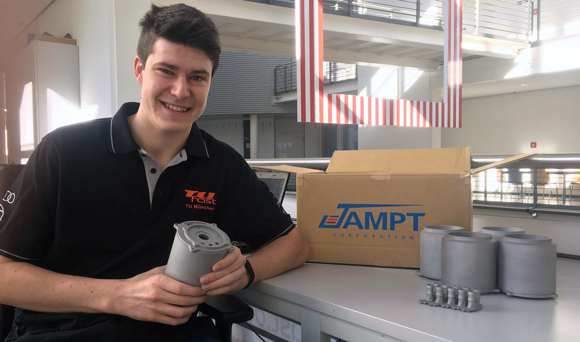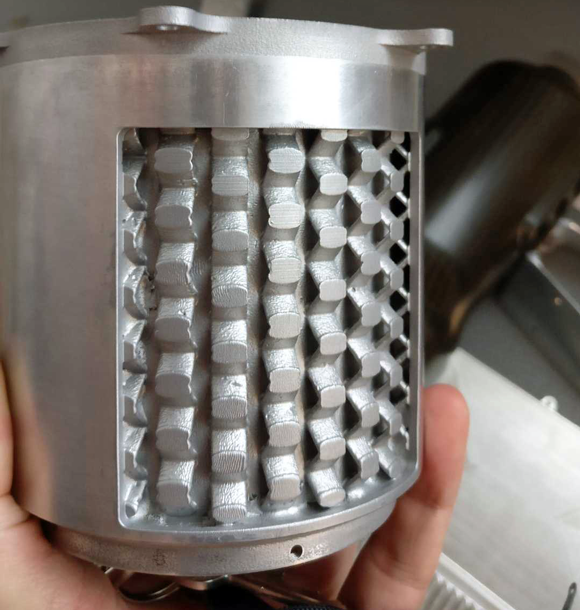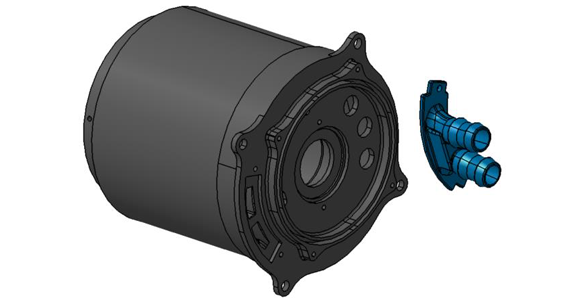Integrated cooling in electric motor housing developed using metal Additive Manufacturing
August 21, 2019

JAMPT Corporation, Miyagi, Japan, has been working with the Technical University of Munich’s TUfast Racing Team to develop an electric motor housing with integrated cooling for use on its Formula Student electric-powered racing car. Thanks to the use of metal Additive Manufacturing, JAMPT and the TUfast team optimised the design of the housing and inlet to produce a motor which allowed the vehicle to remain aerodynamic, which was lightweight, and which had sufficient power and torque.
The annual Formula SAE and Formula Student competitions challenge students to design and build race cars, which race and are also ranked based on their design, acceleration, efficiency, endurance and cost, among other factors. The 2019 competition required the TUfast team to produce two all-new Formula Student racing cars, one with an electric and one with a combustion powertrain.
In order to fit completely into the wheel rim of the vehicle to minimise drag, the electric motor housing developed in conjunction with JAMPT – which is also one of the team sponsors – had to be under 150 mm in length. The housing also required a sufficient cooling system to transfer heat induced by stator losses and to avoid overheating, which would lead to its automatic shut down.
To address this need, the team and JAMPT opted for an integrated water cooling system consisting of a ‘pin’ structure, incorporating 45° angled pins, enabling the surface to transfer more heat due to the increased surface area. The resulting turbulent flow of coolant also maximises heat transport, with the pin structure offering reduced flow separation and a lower pressure drop compared to a helix structure.

The only manufacturing method capable of producing a part with this type of inner structure in one piece is metal Additive Manufacturing. JAMPT produced the housing by Laser Powder Bed Fusion (L-PBF) on an EOS M 280 system, followed by milling and turning to achieve the final tolerances. The housing was built from AlSi10Mg due to the material’s low density and weight, high heat conductivity and low cost.
The optimised design of the internal structure made it possible to produce the part by L-PBF without the need for support structures within the cooling channel, and ensured that no metal powder was left inside the cooling channels after the build. To reduce the need for support structures at the front surface of the part, the inlet and outlet were also separated from the main body for the build process.

To further save weight, a titanium hollow shaft was used in the motor design. A polygon connection was used between the rotor shaft and sun gear to reduce the length and lower weight. Axial length was kept as low as possible to fit the motor completely into the rim, and a carbon fibre-reinforced polymer (CFRP) cap was fitted for the HV-connection to avoid collisions with the tie-rod.
Since the launch of the Formula Student 2019 competition, the TUfast team has competed in two races in the electric race car in which the cooling shell and inlet are installed – Zala Zone, Hungary and Red Bull Ring, Austria – winning both. TUfast recently competed and took first place in the biggest event on the Formula Student circuit, at the Hockenheimring, Germany, which ran from August 5–11, 2019.
















